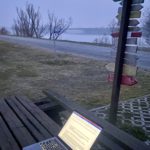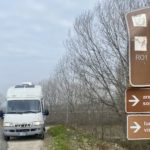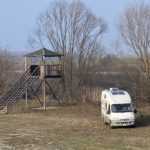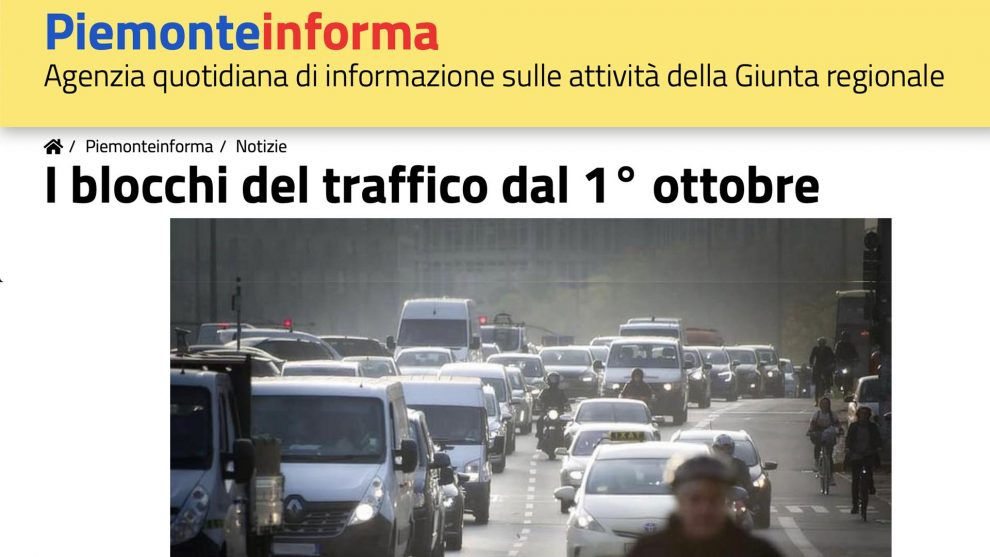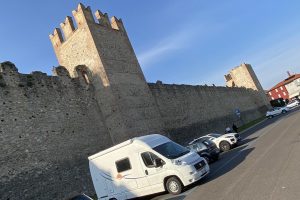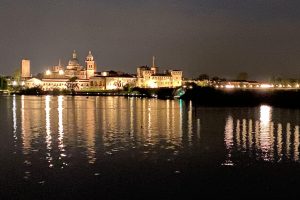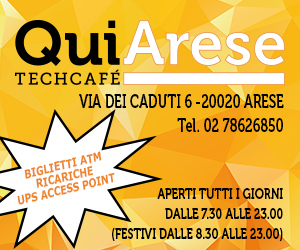October 4, 2020 – In a post published yesterday on Seimetri.it we examined the limitations in force in Lombardy for the circulation of vehicles according to the anti-pollution regulations. Today we deal with Piedmont, immediately reiterating that there are no national laws that limit the circulation of particular categories of vehicles for the transport of people that have up to 8 seats, in addition to the driver: motorhomes and cars (both included in category M1) are restricted on a local basis only.
Before going into detail, here is a summary for those short on time:
- Is there a national legislation that prevents motorhomes from circulating at Euro 0-1-2-3? No
- What are the permanent limits in Piedmont? Vehicles from Euro 0 to Euro 1 petrol and Euro 2 diesel cannot circulate in the municipalities of Turin, its belt and in those with over 20,000 inhabitants (37 in total), on any day and at any time. Euro 3 diesel vehicles cannot circulate from 8.30 to 18.30 from Monday to Friday, excluding holidays, in the period from 1st October to 31st March. From January 1st, Euro 4 diesels will also be added to the latter.
- Are motorhomes exempt from pollution limits? No
- Can vehicles of historical or collectible interest circulate? Only if they are registered in the “special registers” and only to participate in specific events.
- Can dual-fuel vehicles circulate? No.
- If there are many of us on the vehicle, is it possible to drive? There is an exemption for those traveling with at least three people on board, which is however defined as car pooling (shared commute from home to work) which can therefore create problems of interpretation.
- Can “special purpose vehicles” circulate? Yes.
- Are motorhomes “special purpose vehicles”? If the letter “J” reads “Motorhome – Own use” in the booklet, no; if, on the other hand, the “for residential use” function is indicated and the “motorhome” item does not appear, yes.
- Are there any other major exemptions? Yes, if you have an ISEE of less than €14,000 or if the driver is 70 years old and he does not have other vehicles, he can drive.
37 the municipalities concerned
In Piedmont, the bans apply from 1 October 2020 and concern a smaller number of municipalities than in Lombardy, where there are 570 of them for which some limit is envisaged. A trade union ordinance provides for this, citing Turin, its “belt” and municipalities with populations over 20,000 inhabitants. In total there are 37: Alba, Alessandria, Asti, Beinasco, Borgaro Torinese, Bra, Cambiano, Carmagnola, Casale Monferrato, Caselle Torinese, Chieri, Chivasso, Collegno, Grugliasco, Ivrea, La Loggia, Leinì, Mappano, Moncalieri, Nichelino, Novara, Novi Ligure, Orbassano, Pianezza, Rivalta di Torino, Rivoli, San Mauro Torinese, Santena, Settimo Torinese, Torino, Tortona, Trecate, Trofarello, Venaria Reale, Vercelli, Vinovo e Volpiano.
Here the permanent restrictions provide that Euro 0 petrol vehicles and diesel vehicles up to Euro 2 of categories M1 and N1/N2/N3 (freight transport) can no longer circulate, on any day and at any time. Euro 3 diesels are currently blocked only from 8.30 to 18.30 from Monday to Friday, excluding holidays, in the period from October 1st to March 31st. From January 1st, Euro 4 diesel vehicles will also be added.
The exemptions
Speaking of exemptions, for vehicles up to Euro 2 there are not many openings: only vehicles of historical or collectible interest can circulate as long as they are “registered in the appropriate registers, only for participation in events organized by the Associations”. The only other possibility is to have an appointment for revision or for scrapping (!). In both cases, a declaration is required drawn up on headed paper of the company carrying out the intervention.
Who has a Euro 3 (also Euro 4 from January) has several more possibilities. However, the long list of exemptions does not include motorhomes, or rather “autocaravan”, as such. It is true that the ordinance excludes from the limits “the vehicles that art. 54 of the Traffic Laws defines ‘motor vehicles for specific transport’ and ‘motor vehicles for special use’‘”, just as it is true that among the latter the regulation mentions” motor vehicles for residential use “, but our vehicles do not normally belong to this category.
Vehicles for special purpose and “car pooling”
The aforementioned article 54 includes them under the letter “m” as “autocaravan” and therefore with a different classification from those mentioned under letter “g” (motor vehicles for special purpose). Some motorhomes registered or approved in an improper way may have the wording on the registration certificate (the so-called booklet) that identifies them as “for home use”, but if instead the indication – as in most cases – is “Autocaravan – Use own ”means that the vehicle is not excluded from the permanent bans.
Also exempted are “vehicles with at least 3 people on board (car pooling)“. Theoretically, if there are 3 of you in a motorhome, then you are fine, but the interpretation of the two English words “car pooling” added in brackets can create problems, because that is a concept that refers to those who share the car to travel from home to work and vice versa and normally not to those on vacation or out and about in their free time. If any of you have had a discussion on this issue with the police, please let us know how it went.
People drive with low income or old age
Vehicles driven by people whose ISEE is less than €14,000 can also circulate in Piedmont, as long as there are no vehicles excluded from the limitations and within the limits of only one vehicle per family unit. The ISEE can be self-certified. A similar exemption applies to those who have reached the age of 70.
Vehicles used for the transport of disabled people or people suffering from serious diseases can also circulate. If the person concerned is not on board, it is necessary to demonstrate with a “declaration issued by the offices, clinics, etc. which specifies the address as well as the start and end time of the activity“. All accompanied by “suitable documentation”. In the same way, those who transport people undergoing therapy, surgery or examinations or discharged from hospitals and nursing homes can also move with dated means, showing the relative certification. If the person concerned is not on board, a self-certification with route and timetable accompanied by “appropriate documentation” is required.
Emergency measures
This is what the “standard ordinance” provides as structural limitations. Then there are the cases in which pollution increases and further temporary bans are applied. When the alert passes to the “1st level – ORANGE color” or to the “2nd level – RED color” diesel vehicles up to Euro 5 also stop every day from 8.30 to 18.30. Restrictions of this type can only be placed in the period from October 1st to March 31st of next year.
However, each municipality can have specific limits and it is therefore advisable to check with each local authority if there are particular prohibitions. Contrary to what is expressly provided by the Lombardy Region, Piedmont has not made it clear that the prohibitions are not applicable on motorways, roads of regional interest and related junctions. However, we must assume that this is the case, otherwise the situation would be really unmanageable even just for those who pass through those areas.
The important thing to know, as we have seen, is that there is no specific exemption for motorhomes even in Piedmont, although here the municipalities affected by the limitations are far fewer than in neighboring Lombardy. To avoid penalties, however, it is better to know what they are and to know the limits to which your vehicle is subjected.
©2021 seimetri.it – If you want to leave a comment on this article, you can do it on our Facebook page





